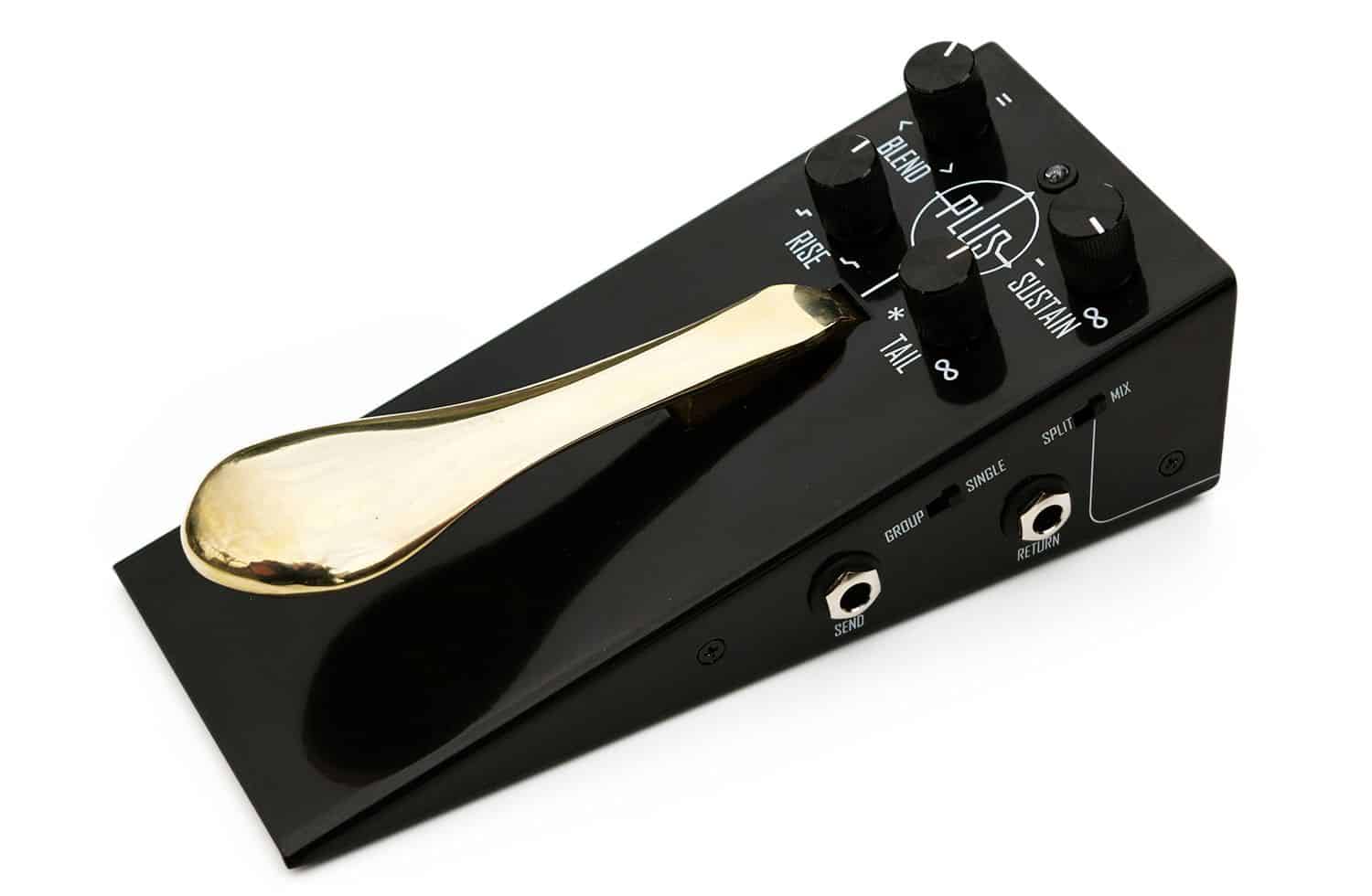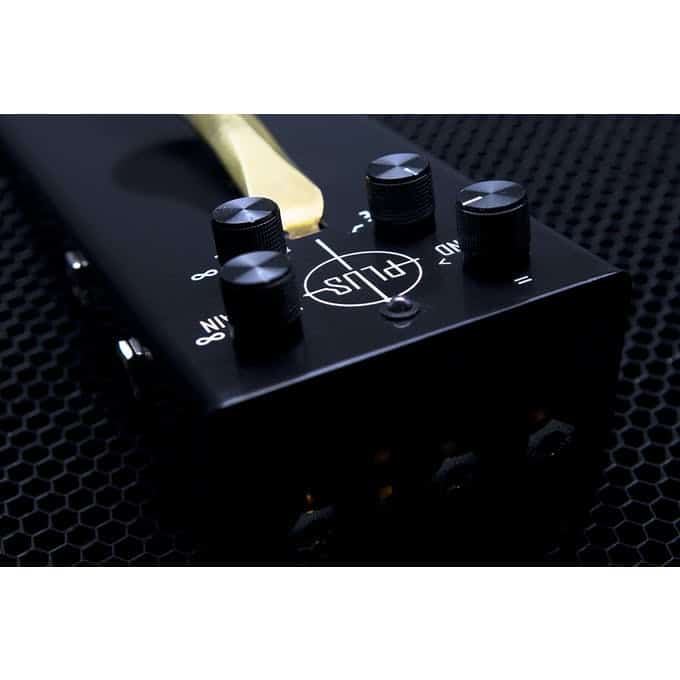
Gamechanger PLUS PEDAL
You might also want to connect with us on Facebook, YouTube, Instagram, or by email.
Out of stock
SUSTAIN and REAL-TIME AUDIO SAMPLING
is a unique audio algorithm developed by GAMECHANGER AUDIO that lets you capture and sample tiny bits of your instrument’s signal in real time and loop them into a seamless, warm and responsive sustained tone.
Unlike existing granular synthesizers and synth-pad triggers, PLUS Pedal actually runs a constant Hi-Res recording of your instrument, and once engaged, the RealTime sampling algorithm instantly creates a circular micro-loop out of the most recent audio signal produced by you.
Think of it as a smart looper that only catches the last segment of your chosen note or chord, and uses it to create a continuous sound.
The resulting layers of sustain can be practically indistinguishable from the original tone of your instrument, and you can further adjust and fine-tune the PLUS Pedal to achieve the exact type of sustain you have imagined.



Specs
Knobs
- BLEND
- Controls the volume of the WET Signal produced by the PLUS Pedal. The medium “12 o’clock” position (indicated by a special indent in the potentiometer’s path) represents an even volume between the input signal and the WET signal, but, this can vary with different instruments, or playing styles.
- RISE
- Sets the fade-in speed of all new sustain layers, generated by the PLUS Pedal. A minimum setting will let you bring in new tones instantly, whereas the maximum setting will result in extended gradual swells. In our experience – the sweet-spot for a smooth transition between your instrument and the generated tone is somewhere between 9 and 12 o’clock, whereas longer settings are excellent for creating soundscapes and cinematic ambiance.
- TAIL
- Lets you adjust the amount of spillover signal after you release your foot from the pedal. When the TAIL knob is set to zero there will be no spillover signal – the sustained tone will cut out instantly as you release your foot from the pedal. A 9 o’clock setting will produce just enough spillover signal to create smooth transitions between different chords. This is useful when you are stepping outside of diatonic harmonies. Setting the TAIL knob above 12 o’clock will result in long, gradual fade-outs, thus giving you enough time to start building multiple layers of chords – sampling a new chord while the previous one is still ringing. When TAIL is set to Maximum (infinity sign) – Each layer of sustain will keep ringing infinitely even after the pedal has been released. As before – you can add up to 5 new layers on top of each other to create very rich polyphony.
- SUSTAIN
- SUSTAIN is a special knob that changes its functionality when you switch from Single mode to Group mode. In SINGLE mode – the SUSTAIN knob allows you to control the behavior of the hold-function (while the foot-pedal is pressed down). When set to minimum, it will emulate the natural decaying properties of a ringing string – gradual reduction of high frequencies. In our experience, this is incredibly useful when playing jazz, blues, and classical music. Whereas when set to the SUSTAIN knob will keep the sustained note/chord completely static for as long as the foot-pedal is pressed down, without applying any frequency filters. In GROUP mode – the SUSTAIN knob allows you to reduce the number of layers allowed simultaneously – you can choose from 1 to 5 layers (see drawing below). That means – Even if you are playing with a long TAIL – setting the SUSTAIN knob to minimum will limit the maximum number of sustained sounds/layers to just 1 single layer. This is indicated by the main LED, which will produce a single flash when the SUSTAIN knob is turned all the way down. If you’d like to use two circular layers, turn the SUSTAIN knob to around 10 o’clock until you see two quick flashes, and so on..
Switches
- SINGLE MODE and GROUP MODE
- When in Single mode: holding down the foot-pedal will allow you to sustain one (most recent) note/chord. All previous audio slots will continue fading out according to the speed set by the TAIL knob. However, In GROUP mode – pressing and holding the foot-pedal lets you hold the whole group of audio layers currently active. For example – you can use a medium TAIL Setting to create a quick three note arpeggio and then just continue holding all three layers by keeping the foot-pedal pressed down.
- SPLIT/MIX switch
- The PLUS Pedal features two 1⁄4 inch output jacks labeled “OUT” and “CLEAN OUT/FSW”. There is also a toggle switch on the Pedal’s side, labeled SPLIT & MIX.
Outputs
- OUT
- “OUT” is the PLUS Pedal’s main output which can send two kinds of signal: 1) the combined DRY signal coming from your instrument with the WET signal, this is the PLUS Pedal’s most commonly used mode and it can be activated by setting the above-mentioned toggle switch to “MIX” 2) only the isolated WET signal generated by the PLUS Pedal. This way your instrument’s DRY signal will be muted, but you will still be able to produce sustained tones as before, by using the foot-pedal.
- CLEAN OUT/FSW
- Sends out the unaffected Dry signal from your instrument at all times. Thanks to this dual output system the PLUS Pedal offers a lot of diversity when it comes to setting up your signal chain and creating stereo effects. The “CLEAN OUT/FSW” output also doubles as an input for the WET Only Footswitch.
- SEND and RETURN
- Two 1⁄4 inch jack inputs for Effects Loop (labeled Send an Return)
Power
- Power Requirements
- 200mA, 9VDC, center negative 2.1 x 5.5 mm plug.